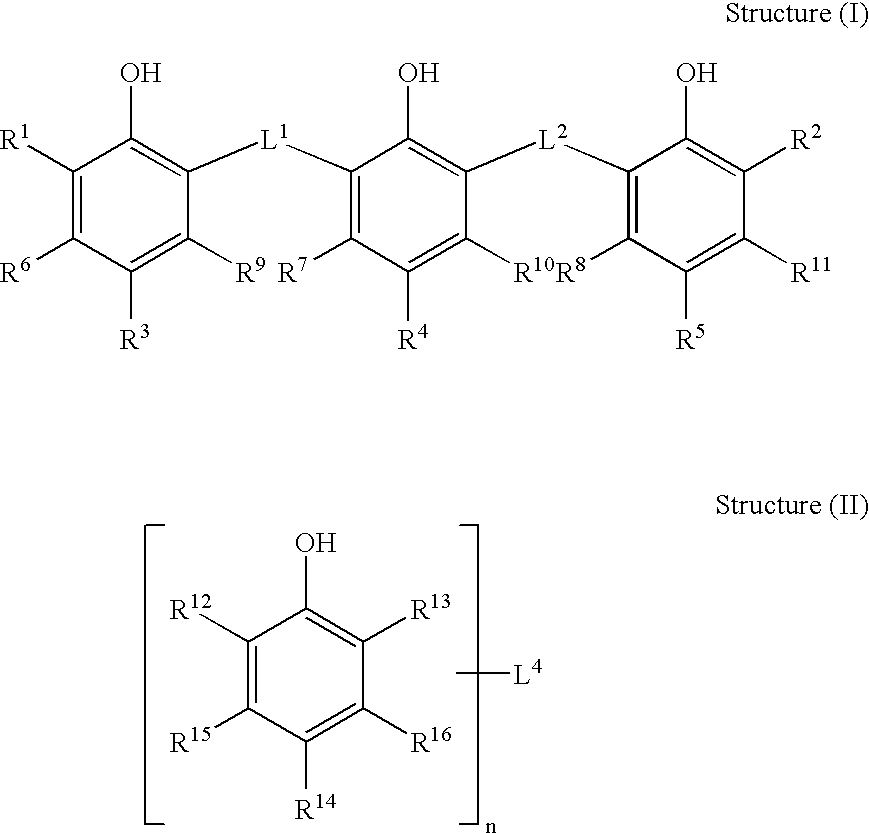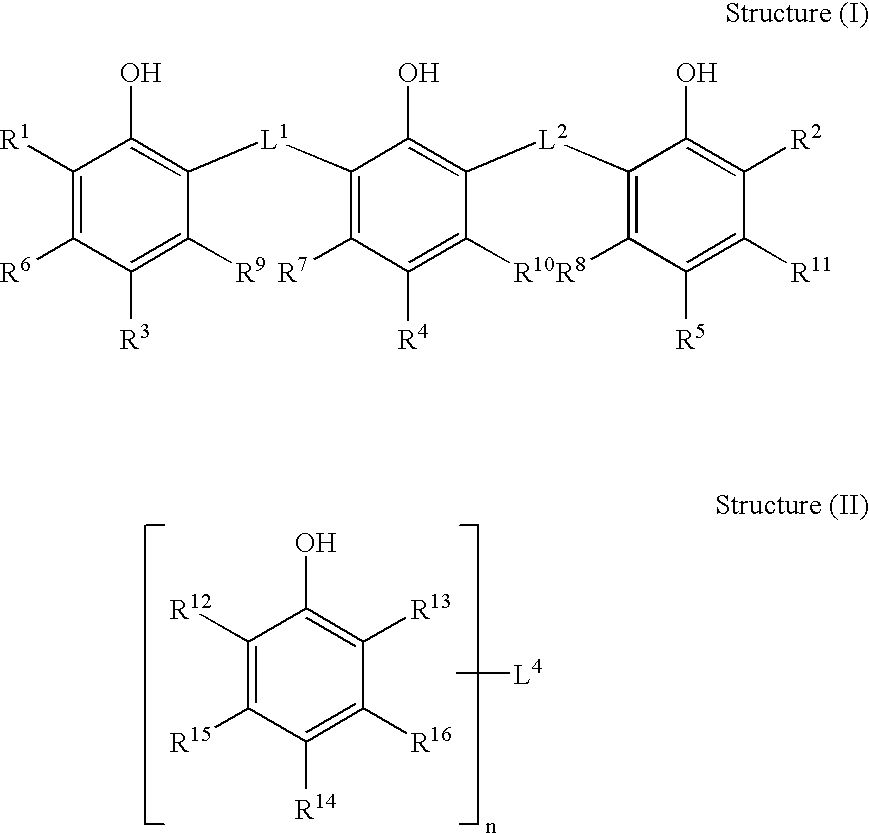Thermally developable materials containing reducing agent combinations
a technology of reducing agent and developing material, which is applied in the field of thermo-developable materials, can solve the problems of distinctly different problems, increased formation of various types of “fog” or other undesirable sensitometric side effects, and much effort in the preparation and manufacture of photo-thermographic materials, and achieves the effects of improving silver efficiency, reducing the number of reducing agents, and improving the stability of initial dmin and print in the dark during storag
- Summary
- Abstract
- Description
- Claims
- Application Information
AI Technical Summary
Benefits of technology
Problems solved by technology
Method used
Image
Examples
example 1
[0291]The following example demonstrates the improvement in hot-dark print stability using a combination of trisphenol and bisphenol reducing agents.
[0292]Preparation of Photothermographic Emulsion Formulation:
[0293]A preformed silver halide, silver carboxylate soap dispersion, was prepared in similar fashion to that described in U.S. Pat. No. 5,939,249 (noted above). The core-shell silver halide emulsion had a silver iodobromide core with 8% iodide, and a silver bromide shell doped with iridium and copper. The core made up 25% of each silver halide grain, and the shell made up the remaining 75%. The silver halide grains were cubic in shape, and had a mean grain size between 0.055 and 0.06 μm. The preformed silver halide, silver carboxylate soap dispersion was made by mixing 26.1% preformed silver halide, silver carboxylate soap, 2.1% PIOLOFORM® BM-18 polyvinyl butyral binder, and 71.8% MEK, and homogenizing three times at 8000 psi (55 MPa).
[0294]A photothermographic emulsion formul...
example 2
[0311]Photothermographic materials were prepared, coated, imaged, and evaluated for hot-dark print stability substantially as described in Example 1 but incorporating combinations of trisphenol and monophenol reducing agents.
[0312]The results, shown below in TABLES VI and VII demonstrate the unique ability of reducing agent combinations to provide improved silver efficiency and hot-dark print stability.
TABLE VIReducingAmountAbsorbanceInitialInitialSilver EfficiencySampleAgent(parts)Overcoat810 nmDminDmax(Dmax / Ag Ct. Wt.)Speed-2AC-12-1-ComparativeIII-70.89A1.100.2133.851.961.723.672-2-InventiveI-2 + II-80.60B1.190.2123.852.161.733.920.702-3-InventiveI-3 + II-80.81B1.190.2133.942.211.704.000.702-4-InventiveI-3 + II-80.81A0.950.2103.932.231.744.710.702-5-InventiveI-1 + II-80.73B1.190.2133.712.071.503.230.702-6-InventiveI-1 + II-80.73A0.950.2093.682.131.563.630.70
TABLE VIIΔDmin-BlueΔOD-Blue at ΔDmax-BlueAfter 3 Hours1.2 After 3 HoursAfter 3 HoursHot-DarkHot-DarkHot-DarkSamplePrint Stabi...
example 3
[0313]Photothermographic materials were prepared, coated, imaged, and evaluated for hot-dark print stability substantially as described in Example 1. Comparative Sample 3-1 contained only a bisphenol reducing agent, Comparative Samples 3-2 and 3-3 contained a mixture of a bisphenol and a monophenol reducing agent. Inventive Samples 3-4 and 3-5 contained a mixture of a trisphenol and monophenol reducing agent.
[0314]The results, shown below in TABLES VIII and IX demonstrate the unique ability of reducing agent combinations comprising a trisphenol to provide improved hot-dark print stability. Inventive Samples 3-4 and 3-5 showed higher Silver Efficiency and less change in Dmin-Blue, Dmax-Blue, and Density at 1.2 OD-Blue than comparative samples not containing a trisphenol developer.
TABLE VIIIReducingAmountAbsorbanceInitialInitialSilver EfficiencySampleAgent(parts)Overcoat810 nmDminDmax(Dmax / Ag Ct. Wt.)Speed-2AC-13-1-ComparativeIII-70.89A1.040.2253.741.951.733.573-2-ComparativeIII-7 + I...
PUM
| Property | Measurement | Unit |
|---|---|---|
| temperature | aaaaa | aaaaa |
| temperatures | aaaaa | aaaaa |
| temperature | aaaaa | aaaaa |
Abstract
Description
Claims
Application Information
 Login to View More
Login to View More - R&D
- Intellectual Property
- Life Sciences
- Materials
- Tech Scout
- Unparalleled Data Quality
- Higher Quality Content
- 60% Fewer Hallucinations
Browse by: Latest US Patents, China's latest patents, Technical Efficacy Thesaurus, Application Domain, Technology Topic, Popular Technical Reports.
© 2025 PatSnap. All rights reserved.Legal|Privacy policy|Modern Slavery Act Transparency Statement|Sitemap|About US| Contact US: help@patsnap.com



